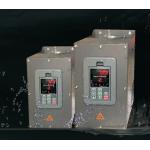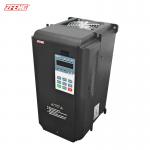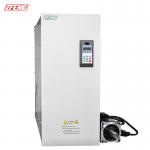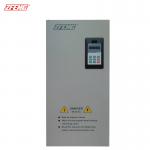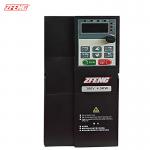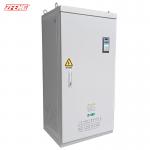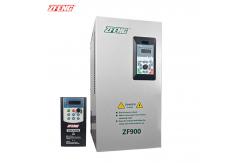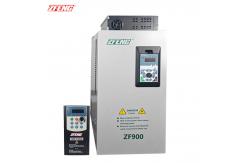ZFeng 900 Series 560Kw-T-G General Vector Variable Frequency DriveThe high-power frequency converter developed and produced by our
company precisely controls the speed of three-phase AC motors by
changing the frequency and voltage of the power supply. Its core
lies in the three major links of rectification inverter control. - Rectification: Convert alternating current into direct current
Input stage: The frequency converter receives three-phase AC
power (such as 380V/50Hz) and converts it into pulsating DC power
through a rectifier bridge (composed of high-power diodes or
thyristors).
Filtering stage: After being filtered by capacitors, pulsating
DC power becomes a stable DC bus voltage (approximately 540V, based
on 380V input).
Analogy: Comparing alternating current to "waves", rectifiers
"flatten" the waves into "flat current" (direct current). - Inverter: Convert direct current into adjustable frequency
alternating current
Core components: Using IGBT (Insulated Gate Bipolar
Transistor) or SiC (Silicon Carbide) power modules, direct current
is chopped into PWM (Pulse Width Modulation) signals through
high-frequency switches (usually several thousand to tens of
kilohertz).
Frequency control: By adjusting the switching frequency and
duty cycle of IGBT, generate AC power with variable frequency and
voltage. For example:
Frequency increase → Motor speed increases
Voltage reduction → adapt to light load conditions
Analogy: Inverters are like "music synthesizers" that
"modulate" direct current into alternating current of different
tones (frequencies) and volumes (voltages) through quick switching. - System: Achieving high-precision speed regulation and protection
Control algorithm: Vector Control (FOC): Decompose the motor
current into torque and excitation components to achieve
independent control, suitable for high dynamic performance
requirements.
Direct Torque Control (DTC): Directly controls torque and magnetic
flux, with faster response speed but slightly larger torque
fluctuations.
Protection function: Built in overload, overvoltage,
undervoltage, overcurrent, overheating and other protection
mechanisms ensure equipment safety.
Analogy: The control algorithm is like an "intelligent driving
system", dynamically adjusting the motor output according to the
load demand to ensure smooth operation.
Key technical points- PWM modulation technology: Generate an approximate sine wave
voltage through high-frequency switches to reduce harmonic
interference.
- Energy feedback: During braking or deceleration, the energy
feedback from the motor is fed back to the grid through an inverter
to improve energy efficiency.
- Heat dissipation design: High power frequency converters need to be
equipped with water cooling or forced air cooling systems to ensure
stable operation of IGBT and other devices at high temperatures.
|
